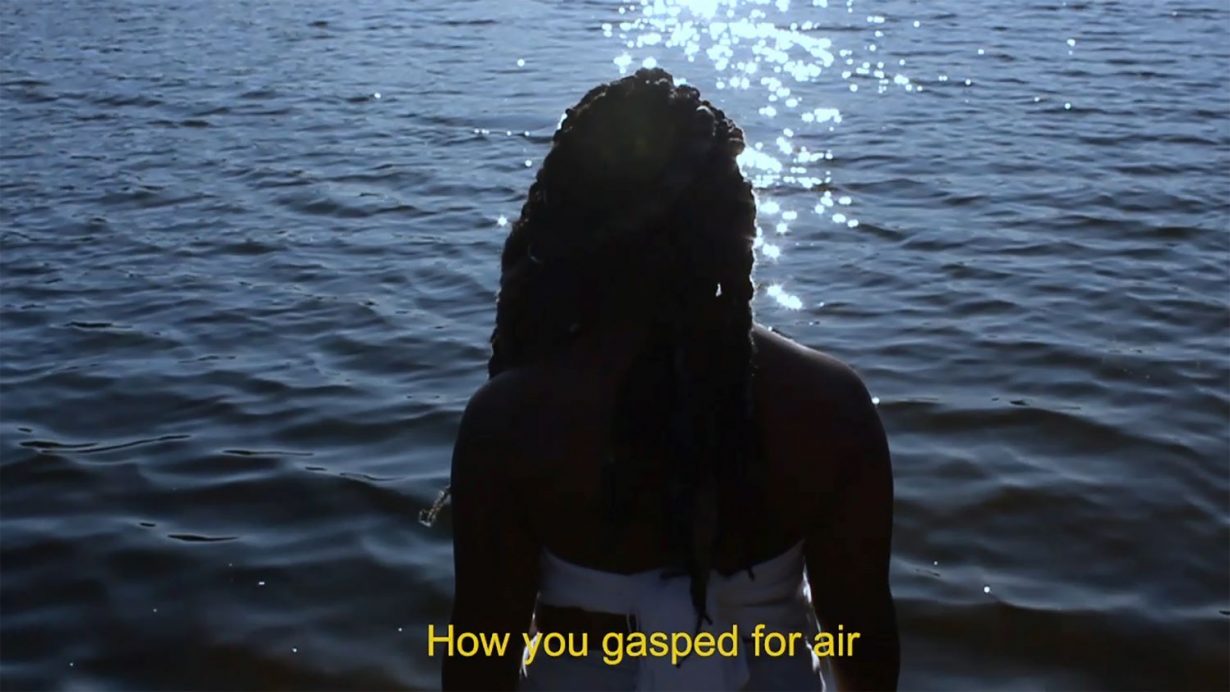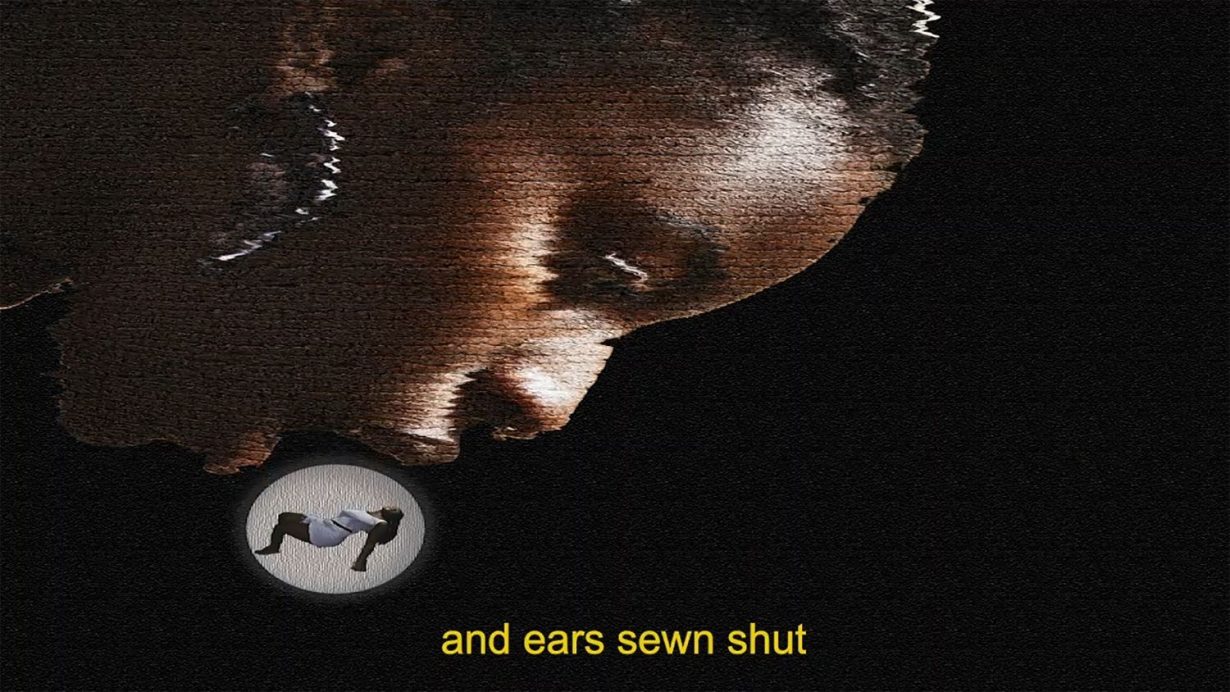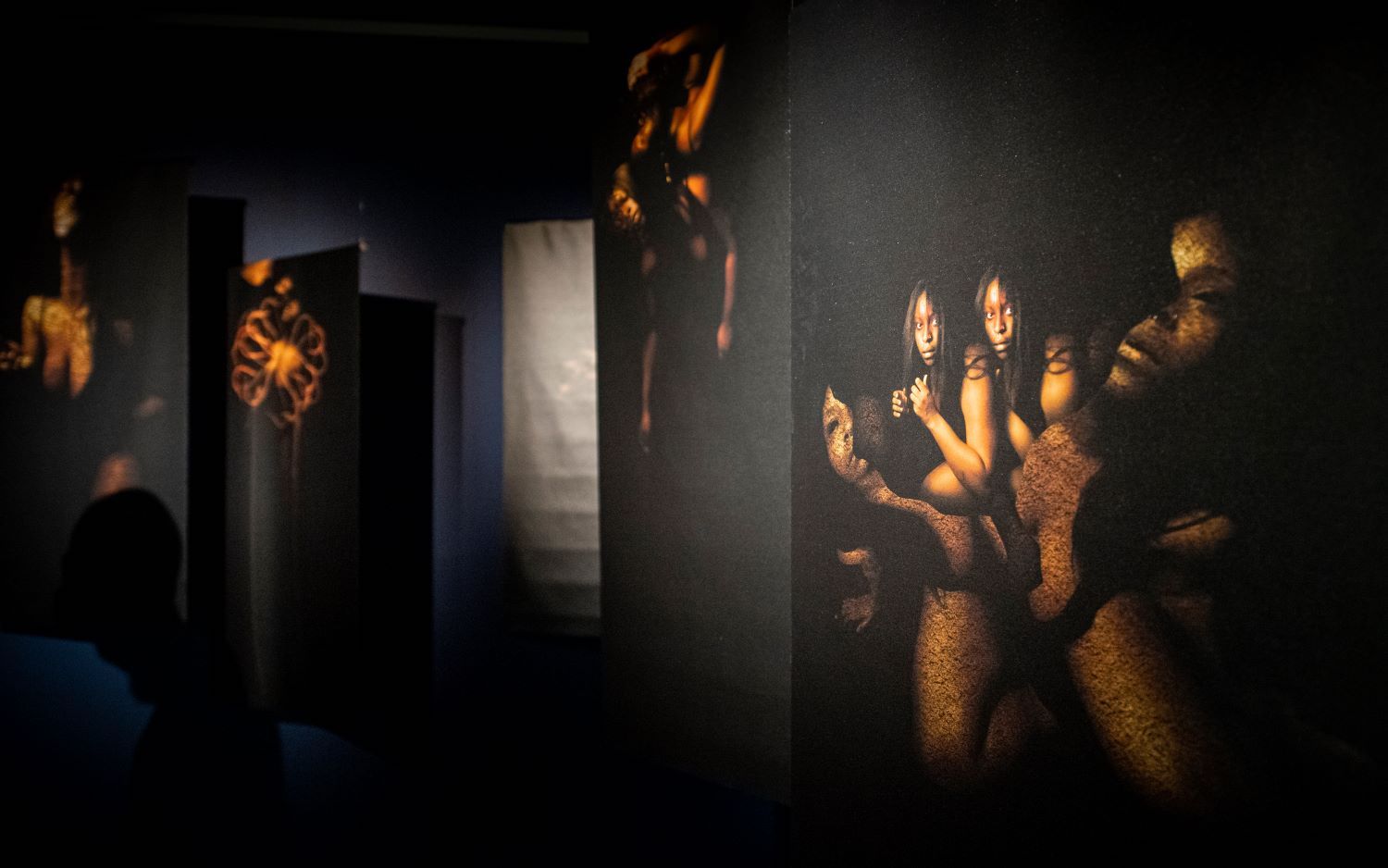The representation of black women’s bodies and the artist’s lived experience are at the heart of a show at New Art Exchange, Nottingham
Arit Emmanuela Etukudo is a Nigerian-American artist whose work encompasses video, image, text and performance. As a storyteller, she often combines self-portraiture with installation. The Christening, her first solo show in the UK, consists of two connected installations, The Things It Carried (2021) and The Christening (2019). In both works, she reframes ways in which black women’s bodies can exist, a signature theme in her work.

On entering the first room, the darkness calls you to silence as your eyes adjust. A series of six spot-lit digital self-portraits, suspended at angles from metal rods, hangs over a mound of black sand in the far corner of the small room. As the viewer moves across the room, the shifting light allows each portrait in The Things It Carried (2021) to reveal itself. Here, the artist has transmogrified and reformed images of herself, with multiple limbs and heads, whirling in meditative, ecstatic or sublime states. The effect is corporeal rather than fleshy, reconfigured rather than dissected, inviting consideration of the newly presented forms in their entirety, rather than their constituent parts. A sense of self-knowledge and self-containment is contained in repeated gestures of caress and touch. Hands seek and search in space – undefined by scale or landscape – unbound by nature or gravity, as if emancipated from the material world, responding to other forces at play. It is as if these female forms divine their environment in new ways, ways for which there is not yet a word. This is not a story of what is seen but of what is experienced, not what the body is but how the body is. Here, time is suspended, enhanced by the soundtrack of spoken word and long held notes that call from the next room.
In The Christening (2019), the light from a low wide projection screen shines on a barely visible object below. On closer inspection, a large box is half buried in another mound of black sand, partitioned off from the viewer by a rope. Inside the box, water covers a series of carefully arranged miniature white clay face casts, some slowly dissolving into mounds of powder, others somehow protected. It is as if museum artefacts had been left outside on a strange landscape to decay. The surface of the water reflects the moving image from the screen above, giving further expression to the shifting material and existential states hinted at in the previous room.

Water is presented as both matter and metaphor. On the screen, a story of a moment of near-drowning is recounted in text and voiceover. The voiceover leads the viewer with the question “Do you remember the birth?” The question-and-response narrative that follows implies this drowning may not have been accidental. Moving images heighten the quality of otherworldliness shared with The Things It Carried. Through Etukudo’s visual vocabulary formed of gestural choreography, the experience of near-drowning isdissected, interpreted and reconstructed. Through this deeply personal story of loss and salvation, she conveys a broader narrative of the fearlessness that is born from invisibility. This short video calls to be seen again.
Through layering text, image and sound, and by putting her own body at the centre of The Christening, Etukudo articulates new ground for the visibility and representation of black women’s bodies. It is achieved through the construction of a stylised visual vocabulary of the female form, the seeking and finding of which is tangible in her work. In these two multi-media installations, Etukudo demonstrates she is a poetic story-teller.
Arit Emmanuela Etukudo: The Christening is at New Art Exchange, Nottingham until 9 October
This article is part of Remark, a new platform for art writing in the East Midlands by ArtReview in collaboration with BACKLIT. Read more here and sign up for the Remark newsletter here
